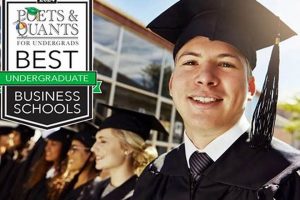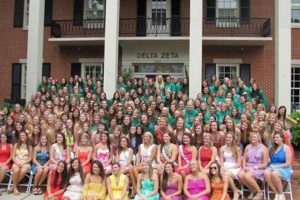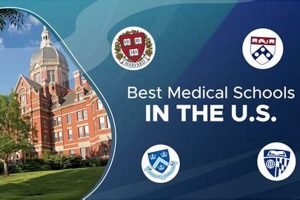High-achieving student-athletes seeking a balance between rigorous academics and competitive intercollegiate athletics within a smaller, more personalized environment often consider National Association of Intercollegiate Athletics (NAIA) institutions. These institutions prioritize student success both on the field and in the classroom, offering a range of degree programs and support services tailored to the unique needs of student-athletes.
A strong academic foundation combined with athletic pursuits provides students with valuable skills and experiences that contribute to their overall development and future career prospects. The NAIA’s emphasis on character development, leadership, and community engagement further enhances the student experience. Historically, the NAIA has championed opportunities for students who may not find the right fit at larger NCAA institutions, providing a pathway to higher education and competitive sports. This focus continues to attract students seeking a more intimate and supportive college environment.
This article will explore several key factors to consider when evaluating institutions excelling in both academics and NAIA athletics. These factors will include academic program quality, faculty expertise, student-athlete support services, athletic program success, and campus culture.
Tips for Choosing a Strong Academic NAIA School
Selecting a college that aligns with academic and athletic aspirations requires careful consideration. The following tips offer guidance for prospective students seeking an enriching experience at a high-quality NAIA institution.
Tip 1: Research Academic Programs: Thoroughly investigate the range and quality of academic programs offered. Look beyond general program descriptions; delve into specific course offerings, faculty credentials, and research opportunities within your field of interest.
Tip 2: Evaluate Faculty Expertise: Faculty expertise plays a crucial role in academic success. Explore faculty profiles, publications, and areas of specialization to ensure alignment with individual learning goals.
Tip 3: Consider Student-Athlete Support: Dedicated academic advisors, tutors, and study halls tailored to student-athlete schedules can significantly impact academic performance. Investigate the availability and accessibility of these resources.
Tip 4: Assess Athletic Program Fit: While academic pursuits are paramount, ensuring a good fit with the athletic program is essential. Consider coaching styles, team dynamics, and competitive levels to find the right environment for growth and development.
Tip 5: Explore Campus Culture: Visiting campuses and engaging with current students provides invaluable insights into campus life and culture. Consider factors such as campus size, student demographics, and extracurricular activities to determine the right fit.
Tip 6: Investigate Financial Aid and Scholarship Opportunities: Understand the financial aid and scholarship opportunities available, including academic and athletic scholarships, grants, and work-study programs.
Tip 7: Connect with Coaches and Current Student-Athletes: Direct communication with coaches and current student-athletes provides firsthand perspectives on the program and institution. These conversations can offer valuable insights into the daily realities of being a student-athlete at a specific school.
By carefully considering these factors, prospective students can identify institutions that foster both academic excellence and athletic achievement. A well-rounded college experience prepares individuals for success long after graduation.
The insights provided in this article offer a starting point for navigating the college selection process. Further research and thoughtful reflection will help prospective students make informed decisions aligned with their individual goals and aspirations.
1. Rigorous Academic Programs
Rigorous academic programs form a cornerstone of the “best academic NAIA schools.” These programs challenge students intellectually, fostering critical thinking, problem-solving skills, and a deep understanding of chosen disciplines. This academic rigor prepares students not only for successful careers but also for lifelong learning and adaptable futures. The following facets highlight key components of such programs.
- Challenging Curriculum:
A challenging curriculum goes beyond introductory concepts, delving into advanced topics and fostering in-depth knowledge acquisition. Courses often incorporate complex readings, research projects, and demanding assessments. For example, a biology program might require extensive lab work and independent research, while a history program might emphasize primary source analysis and historiographical debates. This academic rigor cultivates critical thinking skills highly valued by employers and graduate programs.
- High Faculty Expectations:
High faculty expectations contribute significantly to academic rigor. Faculty members in strong academic programs set high standards for student performance, pushing students to reach their full potential. This can manifest through demanding assignments, rigorous grading rubrics, and an emphasis on active class participation. These high expectations encourage students to develop strong work ethics, time management skills, and a commitment to academic excellence.
- Emphasis on Research and Scholarly Activity:
Leading NAIA academic programs often emphasize research and scholarly activity, providing opportunities for students to engage in original research projects, present findings at conferences, and even contribute to scholarly publications. This focus on research cultivates analytical skills, fosters intellectual curiosity, and provides valuable experience for students pursuing graduate studies or research-oriented careers.
- Focus on Practical Application and Career Preparation:
While theoretical knowledge is essential, strong academic programs also emphasize the practical application of learned concepts and career preparation. This may involve internships, fieldwork opportunities, or capstone projects that require students to apply their knowledge to real-world scenarios. This practical focus ensures graduates possess the skills and experience necessary to succeed in their chosen fields.
These combined facets create a demanding yet rewarding academic experience. Institutions prioritizing these elements cultivate an environment conducive to intellectual growth, preparing students for both professional success and lifelong intellectual pursuits, hallmarks of the best academic NAIA schools.
2. Experienced Faculty
Experienced faculty contribute significantly to the academic excellence found in top NAIA institutions. Their depth of knowledge, honed teaching methodologies, and established professional networks enhance the learning environment, providing students with a richer and more impactful educational experience. This connection between experienced faculty and high-quality academics is multifaceted.
Faculty with extensive experience often possess a nuanced understanding of their disciplines, allowing them to present complex concepts in accessible ways. They bring real-world examples and practical applications to the classroom, enriching the learning experience beyond textbook theories. For example, a seasoned journalism professor might share firsthand accounts of covering major news events, offering students valuable insights into the profession. Similarly, a business professor with years of industry experience can provide practical context to business principles, bridging the gap between theory and practice. This depth of knowledge and practical application contributes directly to student learning outcomes and career preparedness.
Furthermore, experienced faculty often play a crucial role in mentoring students, advising them on academic and career paths. Their established professional networks can open doors to internships, research opportunities, and post-graduate pathways. They foster a supportive learning environment that encourages intellectual curiosity and independent thinking. The combination of subject matter expertise, effective teaching strategies, and mentoring capabilities positions experienced faculty as essential components of leading academic NAIA institutions. The presence of such faculty frequently signals a commitment to high-quality education and student success, a key characteristic of the best academic NAIA schools.
3. Comprehensive Support Services
Comprehensive support services are integral to the success of student-athletes at institutions recognized for strong academics within the NAIA. These services provide crucial assistance, enabling students to balance the demands of rigorous academic programs with the commitments of competitive athletics. The availability and quality of these resources contribute significantly to the overall student experience and play a key role in distinguishing the best academic NAIA schools.
- Academic Advising:
Dedicated academic advisors specializing in the needs of student-athletes provide personalized guidance on course selection, degree requirements, and academic progress. They help students develop effective study strategies, navigate academic challenges, and maintain eligibility for competition. For instance, an advisor might help a student-athlete balance a demanding pre-med curriculum with their training schedule. Effective academic advising contributes directly to student retention and academic success.
- Tutoring and Learning Assistance:
Tutoring programs and learning assistance centers offer valuable support in challenging subjects. These resources provide individualized instruction, study groups, and workshops designed to enhance understanding and improve academic performance. A student struggling with calculus, for example, could receive personalized tutoring from a math specialist. Access to such support systems can significantly impact academic success, particularly for student-athletes managing demanding schedules.
- Study Halls and Dedicated Study Spaces:
Designated study halls and dedicated study spaces provide student-athletes with structured environments conducive to focused learning. These spaces often offer computer access, quiet study areas, and access to academic support staff. A dedicated study hall in the athletic facility can offer student-athletes a quiet place to complete assignments between practices. These facilities help foster a strong academic culture within the athletic program.
- Mental Health and Wellness Resources:
Recognizing the unique pressures faced by student-athletes, many institutions offer comprehensive mental health and wellness resources. These services provide counseling, stress management workshops, and other support systems to address the mental and emotional well-being of students. Access to mental health professionals helps student-athletes navigate the challenges of balancing academics, athletics, and personal life. This commitment to holistic student well-being contributes to overall academic success.
These comprehensive support services are crucial for student-athlete success in demanding academic environments. Institutions prioritizing these services demonstrate a commitment to holistic student development, a key characteristic of the best academic NAIA schools. This support network not only contributes to academic achievement but also fosters a positive and supportive environment where student-athletes can thrive.
4. Competitive Athletic Programs
A strong correlation exists between competitive athletic programs and institutions recognized as the best academic NAIA schools. While academic excellence remains paramount, the presence of successful athletic programs often indicates a broader institutional commitment to student development and a vibrant campus community. This connection stems from several key factors.
Competitive athletic programs frequently attract high-achieving student-athletes who prioritize both academic and athletic success. These individuals contribute to a culture of achievement and dedication both on the field and in the classroom. For example, a university with a nationally ranked basketball team might also see higher academic performance among its student body due to the overall emphasis on excellence. Furthermore, successful athletic programs can generate increased visibility and resources for the institution, potentially leading to enhanced academic facilities, scholarships, and faculty recruitment. This positive feedback loop can elevate the overall academic profile of the school. A successful athletic program can also foster school spirit and community pride, creating a more engaging and supportive environment for all students, not just athletes.
However, it is crucial to acknowledge potential challenges. Maintaining a balance between athletic and academic priorities requires careful management from both the institution and the student-athletes. Overemphasis on athletic pursuits could potentially detract from academic focus. Therefore, the best academic NAIA schools prioritize student-athlete well-being and academic success while fostering a competitive athletic environment. They achieve this balance through comprehensive support services, rigorous academic standards, and a culture that values both athletic and intellectual achievement. Ultimately, the presence of a competitive athletic program can contribute positively to the overall academic environment, enhancing the student experience and contributing to the institution’s reputation for excellence.
5. Supportive Campus Environment
A supportive campus environment is a crucial component of the best academic NAIA schools. This supportive atmosphere fosters a sense of belonging, encourages academic success, and contributes to the overall well-being of student-athletes. Such an environment recognizes the unique challenges faced by student-athletes and provides resources and a community to help them thrive.
- Strong Sense of Community:
A strong sense of community provides student-athletes with a network of support and encouragement. This can manifest through close relationships with teammates, coaches, faculty, and staff. Smaller campus sizes, characteristic of many NAIA schools, often facilitate stronger community bonds. For example, team study sessions, faculty-athlete mentoring programs, and campus-wide events foster a sense of belonging and shared purpose. This close-knit environment can be particularly beneficial for student-athletes transitioning to college life, providing a built-in support system.
- Accessibility of Faculty and Staff:
Accessible faculty and staff contribute significantly to a supportive campus environment. Open-door policies, readily available office hours, and a willingness to provide individualized support create a culture where students feel comfortable seeking help. For instance, a student-athlete struggling with a particular concept can easily approach a professor for clarification or guidance. This accessibility fosters strong student-faculty relationships, which can positively impact academic performance and overall student well-being.
- Emphasis on Student-Athlete Well-being:
Institutions prioritizing student-athlete well-being offer a range of resources designed to support the mental, emotional, and physical health of their students. These resources may include counseling services, stress management workshops, nutrition guidance, and access to athletic trainers. For example, a dedicated sports psychologist can provide support for student-athletes dealing with performance anxiety or the pressures of competition. This holistic approach to student support contributes to a positive and nurturing campus environment.
- Opportunities for Leadership and Personal Growth:
Opportunities for leadership and personal growth are abundant within a supportive campus environment. Student-athletes are encouraged to participate in student government, clubs, community service initiatives, and other extracurricular activities. For example, a student-athlete might captain their team, lead a campus organization, or volunteer in the local community. These experiences foster leadership skills, build character, and contribute to a well-rounded educational experience.
These facets of a supportive campus environment contribute significantly to the success of student-athletes at the best academic NAIA schools. By fostering a sense of community, providing accessible support systems, prioritizing student well-being, and offering opportunities for leadership development, these institutions create an environment where student-athletes can excel both academically and athletically. This holistic approach to student development distinguishes these institutions and contributes to their reputation for excellence. The supportive environment not only fosters immediate success but also equips students with the skills and experiences necessary to thrive long after graduation.
6. Strong Alumni Network
A strong alumni network is a significant indicator of a high-quality institution, often associated with the best academic NAIA schools. This connection stems from the multifaceted role alumni play in enhancing the student experience, fostering institutional growth, and contributing to the overall success of both current students and the institution itself. A robust alumni network often reflects positively on the quality of education and the overall experience provided by the institution. Alumni who remain engaged and invested in their alma mater typically indicate satisfaction with their educational experience and a desire to contribute to the continued success of the institution.
This positive engagement manifests in several ways. Mentorship programs connecting alumni with current students provide invaluable guidance and support. Alumni working in specific fields can offer career advice, internship opportunities, and professional networking connections, directly benefiting students as they transition into the workforce. For example, an alumnus working in finance might mentor a current student interested in investment banking, providing insights into the industry and potential career paths. Furthermore, alumni often contribute financially to their alma mater, supporting scholarships, facility upgrades, and academic programs. These financial contributions enhance the resources available to current students and faculty, enriching the overall educational experience. A successful alumnus might fund a scholarship for students from their hometown, demonstrating a commitment to giving back and supporting future generations.
The presence of a thriving alumni network signifies a strong sense of community and shared values. It indicates that graduates value their connection to the institution and are invested in its continued success. This ongoing engagement creates a virtuous cycle, enriching the student experience, attracting prospective students, and enhancing the institution’s reputation. While a strong alumni network is not the sole determinant of a high-quality institution, it serves as a valuable indicator, often correlating with other markers of excellence such as rigorous academic programs, dedicated faculty, and comprehensive support services, all characteristics commonly found in the best academic NAIA schools. Understanding the connection between a strong alumni network and institutional quality provides valuable insights for prospective students evaluating potential colleges. This understanding empowers informed decision-making and contributes to a successful and fulfilling college experience.
Frequently Asked Questions
This section addresses common inquiries regarding the intersection of academics and athletics within the NAIA context.
Question 1: How does the academic rigor at NAIA schools compare to NCAA institutions?
NAIA institutions offer a range of academic programs, some with comparable rigor to NCAA schools. Academic quality varies among institutions within both the NAIA and NCAA. It is essential to research specific programs and faculty expertise at institutions of interest.
Question 2: What support systems are available for student-athletes at NAIA schools?
Many NAIA institutions provide comprehensive support services tailored to student-athletes, including academic advising, tutoring, study halls, and mental health resources. These resources aim to assist students in balancing academic and athletic commitments.
Question 3: What are the eligibility requirements for NAIA athletic participation?
The NAIA maintains specific eligibility requirements regarding academic performance and amateur status. Prospective student-athletes should consult the NAIA website and individual institutions for detailed information.
Question 4: Are athletic scholarships available at NAIA schools?
Athletic scholarships are available at many NAIA institutions. The amount and type of aid vary depending on the sport, the institution’s resources, and the student-athlete’s abilities and academic achievements. Contacting the athletic department of prospective schools is crucial for specific scholarship information.
Question 5: How can prospective students identify NAIA schools with strong academic programs in their field of interest?
Researching specific programs, faculty expertise, and institutional accreditation is essential. Consulting college ranking publications that consider both academic and athletic factors can be helpful. Directly contacting institutions and speaking with current students and faculty within the desired program provides valuable insights.
Question 6: What are the advantages of attending a smaller NAIA school compared to a larger university?
Smaller NAIA institutions often offer more personalized attention from faculty, smaller class sizes, and a stronger sense of community. These factors can contribute to a more supportive and engaging learning environment, particularly beneficial for student-athletes balancing multiple commitments.
Careful consideration of these frequently asked questions provides valuable information for prospective student-athletes seeking a balance between academic and athletic pursuits within the NAIA context. Further research and direct engagement with individual institutions will aid in making informed decisions aligned with individual goals and aspirations.
For a deeper understanding of specific institutions and their offerings, the subsequent section will provide a closer look at several exemplary NAIA schools renowned for their commitment to both academic and athletic excellence.
Conclusion
Institutions excelling in academics within the NAIA provide student-athletes a unique opportunity to pursue both athletic and intellectual growth. Key factors such as rigorous academic programs, experienced faculty, comprehensive support services, competitive athletic programs, supportive campus environments, and strong alumni networks contribute to a well-rounded and enriching college experience. The careful evaluation of these factors empowers prospective students to identify institutions aligned with their individual needs and aspirations.
The pursuit of academic and athletic excellence requires dedication, perseverance, and a supportive environment. Institutions prioritizing these values empower student-athletes to achieve their full potential and contribute meaningfully to society. Thorough research and thoughtful consideration of individual circumstances are essential for prospective students seeking the best fit within the landscape of NAIA institutions committed to academic and athletic success.







